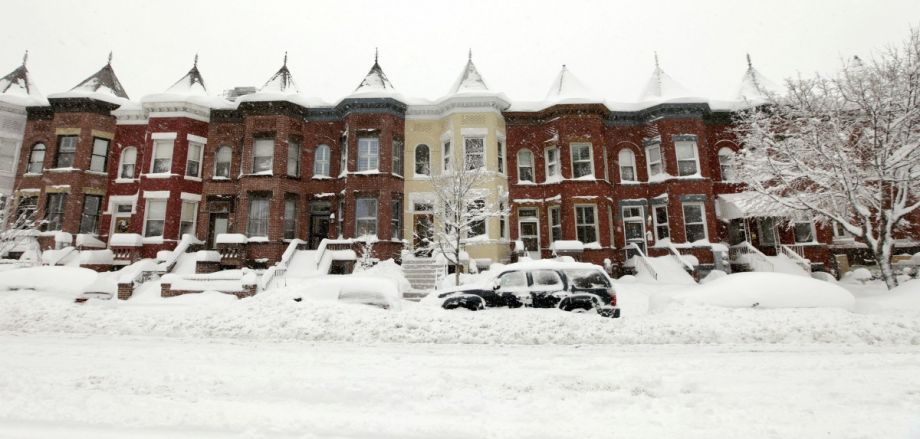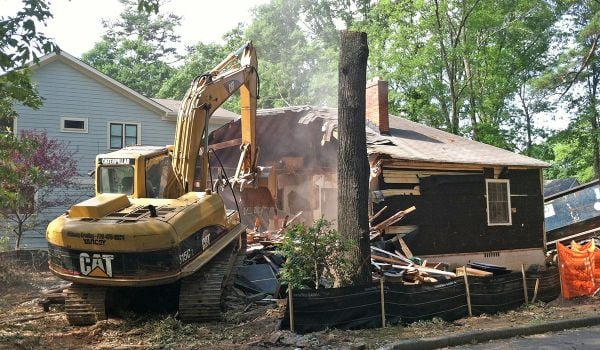Zoning, the invisible corset of every city, might be getting slightly more cinched in some of Washington, D.C.’s low-scale, rowhouse neighborhoods. Last night, the city’s zoning commission held a public hearing to get input about their plan to impose height limits in some neighborhoods.
The proposed maximum height of buildings would drop from 40 to 35 feet. The number of units in a building would be capped at two (versus the current rules that accommodate four on large lots, or more if you apply for a variance). This move is a reactionary one, as “pop-ups” and “pop-outs” — additions, or single family homes being chopped up into smaller units – have created bulging modern appendages within the traditional, family-scaled neighborhoods.
The Washington City Paper reports that most residents who spoke at the hearing favored the imposition of height limits, with one saying the pop-ups were “getting out of control” and another saying, “The possibility exists that our neighborhood could be nothing but condo conversions in 10 years.”
Opponents to height limits claim that because D.C. has such a red-hot housing market and there’s a huge need for low- and middle-income housing, limiting density could make the city’s affordability problems even worse.
Leading up the hearing, Slate’s Jamelle Bouie pointed out the classist underpinnings of planning forums such as these, which often prioritize things like scale and views over people:
This is a recipe for pricing out middle-income residents and displacing lower-income ones. But hey, at least we have our views!
— Jamelle Bouie (@jbouie) January 14, 2015Although gentrifying cities can’t afford to limit growth, neighborhood advocates should still approach development cautiously. As New York is learning, building up — even with the intention of creating affordable housing — doesn’t necessarily mean that low- and middle-income people will end up in those spaces.
The D.C. Office of Planning has tried to appease housing advocates by amending its initial proposal to say that extra units could be permissible under inclusionary zoning, as long as the apartments are available to people making 60 percent of the Area Median Income.
The change clearly privileges homeowners, especially those who are married couples with children. The Office of Planning says that this is a case of preserving a certain type of housing stock, as new construction focuses too heavily on renting to young, single professionals.
The blog GreaterGreaterWashington suggests that more transparency in data-sharing by the Office of Planning might shed light on which type of D.C. resident deserves a larger share of this space.
I agree with Bouie that, when it comes to these types of public planning hearings, the squeaky wheel might be getting the grease. It makes you wonder, though, whether the low- and middle-income households living in D.C. have negative opinions about pop-ups or the proliferation of bite-sized apartments or not (something I feel is not studied enough).
The Washington City Paper quotes a Dupont Circle resident who had a point last night when he commented, “[This] amendment goes too far,” he said. “It’s a broad sword instead of using a scalpel.” Perhaps. But then he goes on to taint his argument with the stench of NIMBYism, saying: “You’re causing economic harm to people who bought real estate.”
The Equity Factor is made possible with the support of the Surdna Foundation.

Alexis Stephens was Next City’s 2014-2015 equitable cities fellow. She’s written about housing, pop culture, global music subcultures, and more for publications like Shelterforce, Rolling Stone, SPIN, and MTV Iggy. She has a B.A. in urban studies from Barnard College and an M.S. in historic preservation from the University of Pennsylvania.






_600_350_80_s_c1.jpg)










